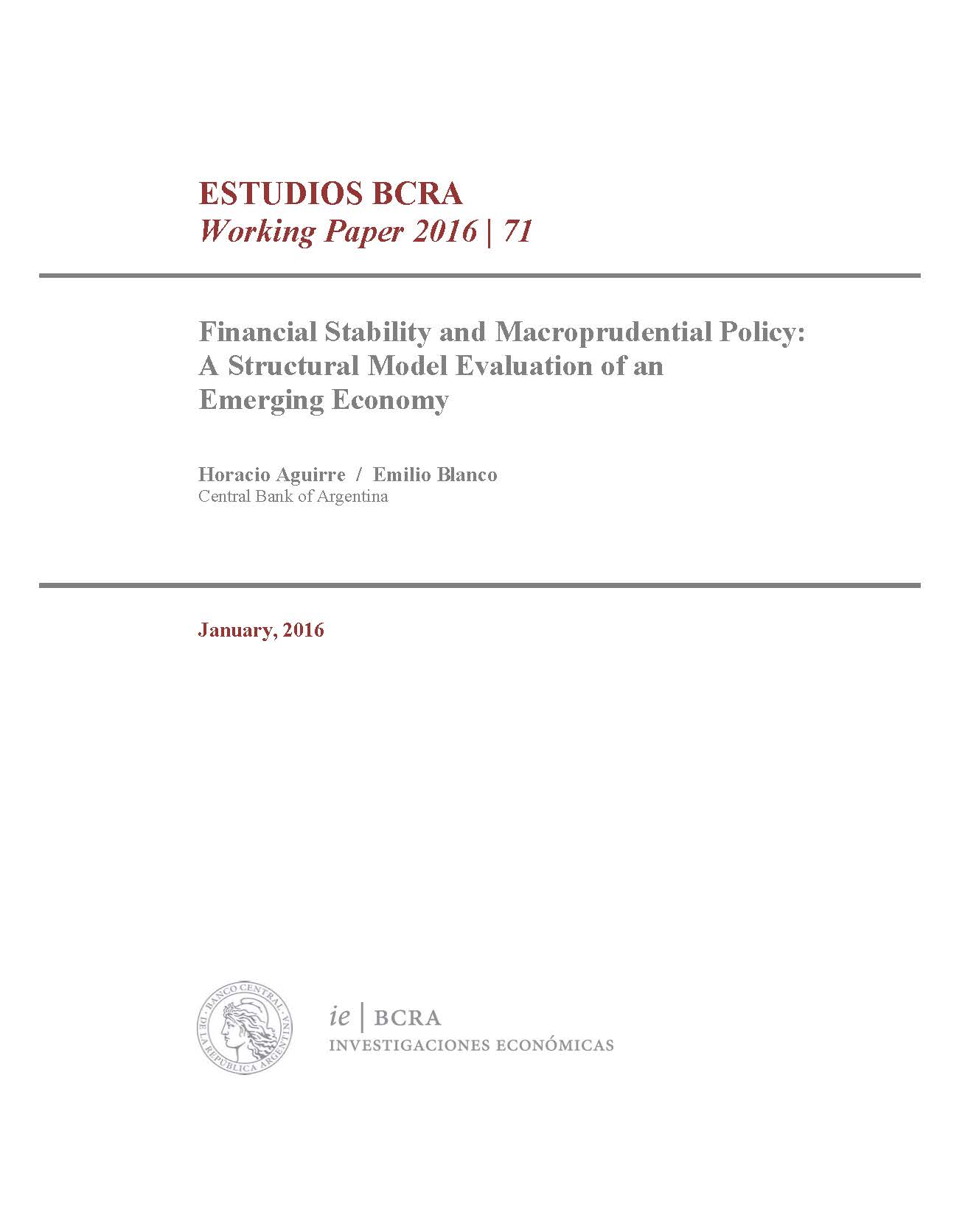Financial Stability and Macroprudential Policy: A Structural Model Evaluation of an Emerging Economy
Working papers | 2016 | N 71
Keywords:
Macroprudential policy, Semi-structural model, Bayesian estimationAbstract
We build a small structural open economy model, augmented to depict the credit market and interest rate spreads (distinguishing by credit to firms and families); monetary policy with sterilized intervention in the foreign exchange market; and macroprudential policy as capital requirements. We estimate the model using Bayesian techniques with quarterly data for Argentina in 2003-2011; it can be extended to other emerging economies, allowing for comparative empirical analysis. Results indicate that shocks to lending rates and spread weigh on macroeconomic variables; likewise, the credit market is affected by macroeconomic shocks. Capital requirements, beyond their strictly prudential role, appear to have contributed to lower volatility of key variables such as output, prices, credit and interest rates. The interaction of monetary policy, foreign exchange intervention and prudential tools appears to be synergic: counting on a larger set of tools helps dampen volatility of both macroeconomic and financial system variables, taking into account the type of shocks faced during the estimation period.
JEL classification: E17, E51, E52, E58


